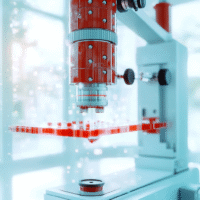Understanding the Trial Results
This study looked at a treatment called Multi-wave Locked System (MLS) laser therapy for people with chronic non-specific neck pain (CNNP). Here’s what the results mean:
What Worked?
- The MLS laser therapy helped improve the range of motion in neck movements, like bending and turning.
- Patients receiving MLS therapy felt some pain relief and were able to move their heads faster.
What Didn’t Work?
- Both the MLS laser and the sham (placebo) treatments showed improvements in pain and disability, but these improvements were not enough to be considered meaningful by doctors.
- While there was a trend towards more pain reduction with MLS, it did not reach a significant level that would change patient care.
How This Helps Patients and Clinics
This study suggests that MLS laser therapy can help improve neck movement for patients with chronic neck pain, even if the pain relief isn’t as strong as hoped. Clinics can consider this treatment as an option for supportive care.
What Can Hospitals or Doctors Do?
- Offer MLS laser therapy to patients struggling with neck pain as part of a broader treatment plan.
- Combine MLS therapy with other treatments to enhance patient recovery.
What Should Clinics Track?
- Patient’s neck pain levels using a simple pain scale.
- Range of motion in the neck before and after treatment.
- Patients’ overall disability scores related to neck pain.
AI Tools to Consider
There are AI solutions that can help clinics analyze patient data and track treatment outcomes. These tools can assist in understanding which therapies are most effective for individual patients.
Step-by-Step Plan for Clinics
- Start by training staff on MLS laser therapy and how to use the equipment.
- Begin offering MLS therapy to a small group of patients with chronic neck pain.
- Collect data on patient outcomes, including pain levels and range of motion.
- Gradually expand the use of MLS therapy based on positive results and patient feedback.
Further Information
For more details about this research, you can find the study at this link.




























